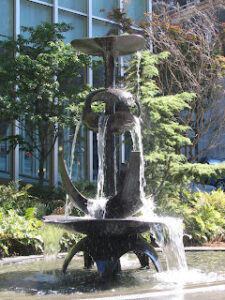

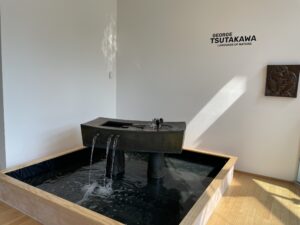
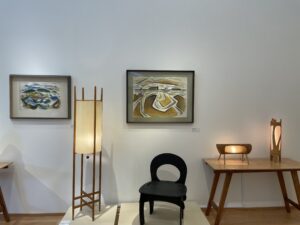
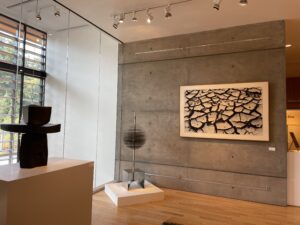
“George Tsutakawa: The Language of Nature” at the Bainbridge Island Museum of Art includes drawings, watercolors and sumi works as well as oil paintings, one of his famous fountains, several large photographs of others, and even his furniture.
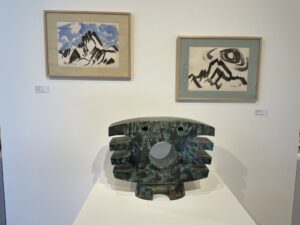
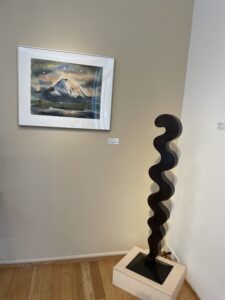
The unique exhibition borrows many works from the Tsutakawa family that have never before been exhibited. The thoughtful installation emphasizes the interplay of two- and three-dimensional work.
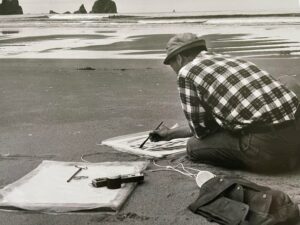
But the dominating theme of the exhibition is the artist’s connection to nature. In a striking photograph near the beginning of the exhibition we see him sitting on the beach at low tide sketching the sea with his paper on the sand.
Tsutakawa explored both East and West aesthetics: his painting and sculpture are profoundly based in nature even when they appear abstract.
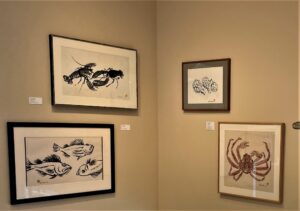
We see subtle observations in sumi sketches of shrimp, lobster, codfish, squash and leeks. birds, and trees. They are both filled with an abstract space and detailed in their realism. Tsutakawa observed the shrimp from many directions, as they gathered.
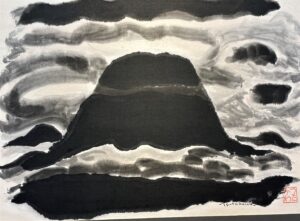
His watercolors of landscapes, particularly two of Mt. Rainier, one in transparent watercolor, the other in black, opaque sumi ink. demonstrate his close observation of changing light and atmosphere For all of us in Seattle who experience the constantly changing view of Mt Rainier, these two works resonate and represent two extremes of a spectrum from light to dark.
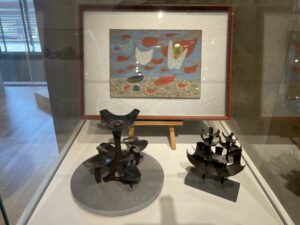
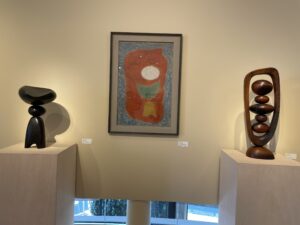
One of his favorite forms was the Obo, the rock that pilgrims in the Himalayas pile up to create a memorial. In his sculpture, you can see that reference, as he creates cedar or teak sculptures with both highly polished and carefully textured surfaces. These models and the painting are based on the obi shape. Once you see it you will recognize it everywhere.
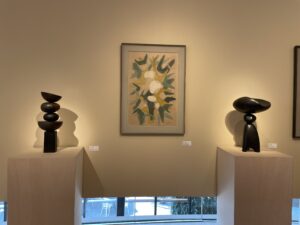
Tsutakawa is best known for his bronze fountains of which there are twelve just in Seattle, and seventy-five around the country. The first and best known is “Fountain of Wisdom,” 1957–60, in front of the Seattle Public Library. These elegant metal sculptures subtly incorporate a water flow that interacts and completes their form. Here is our most familiar work, Fountain of Wisdom at the Seattle Public Library.
